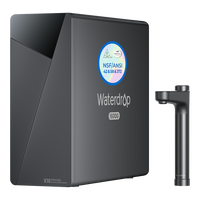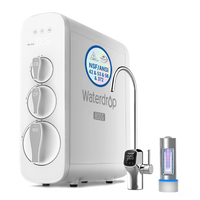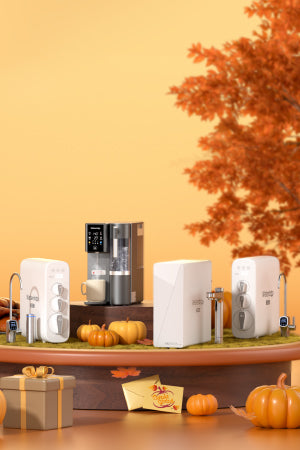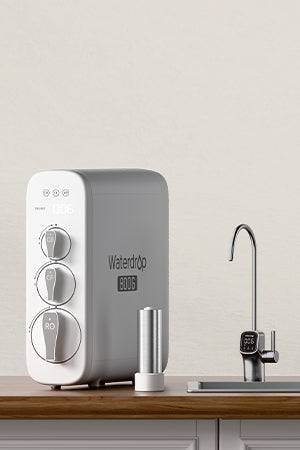Le Fonds des Nations Unies pour l’enfance (UNICEF)
suggère que « l’accès à l’eau potable est un droit humain fondamental et un
condition préalable à la réalisation de nombreux autres droits de l’homme. » Lorsque les pays membres des Nations Unies (ONU)
a établi un plan de développement durable en 2015, intitulé Transformer notre monde : l'Agenda 2030 pour le développement durable.
Le développement durable et l’eau potable étaient au cœur des préoccupations.
Le plan Transformer notre monde : le Programme de développement durable à l'horizon 2030
se compose de plusieurs objectifs connus sous le nom d'Objectifs de développement durable (ODD). L'ODD 6.1 du plan
vise à « parvenir à un accès universel à des sources d'eau améliorées, avec
un aller-retour pour la collecte de l’eau ne dépassant pas 30 minutes, à l’abri de toute contamination et disponible en cas de besoin.
Les objectifs ont été fixés. Mais où en sommes-nous en 2021 ?
Et combien de travail reste-t-il à accomplir ? C'est à ces questions que nous souhaitons répondre dans cet article. Nous commençons par
en examinant l’ampleur du défi de l’eau potable et les initiatives à travers le monde qui visent à
Garantir à chacun l'accès à l'eau potable dans ses locaux. Enfin, nous nous concentrons sur l'avenir.
Les attentes
Pour déterminer si des progrès ont été réalisés ou combien de travail reste à faire
Pour garantir que l'accès universel à l'eau potable devienne une réalité, nous devons comprendre ce que signifie
La norme est. Cette idée est fournie par l'ONU et l'Organisation mondiale de la santé (OMS) à travers les
Lignes directrices pour
Qualité de l'eau potable, 4e édition (GDWQ).
Suffisant : Chaque personne devrait disposer d'un approvisionnement constant et suffisant en
eau pour usage personnel et domestique. Une quantité d'eau suffisante pour chaque individu se situe entre
50 et
100 litres par jour.
Sûr : L'eau destinée à un usage domestique ou personnel ne doit pas contenir de produits chimiques.
substances, micro-organismes ou risques radiologiques susceptibles de nuire à la santé humaine. Les réseaux d'eau locaux ou nationaux
Les mesures de qualité sont souvent utilisées pour déterminer les paramètres de sécurité de l’eau potable.
Acceptable : L'odeur, la couleur et le goût de l'eau doivent être acceptables
norme telle que définie par une autorité locale ou nationale compétente, et les installations d'eau doivent être conçues en
une manière qui prend en compte les modes de vie, la culture et les exigences de confidentialité des utilisateurs.
Accessible : Les personnes ne doivent pas marcher plus d'un kilomètre ni faire un tour
déplacement de plus de 30 minutes depuis leur domicile, leur école, leur lieu de travail ou leur établissement de santé pour récupérer des médicaments sûrs
eau potable.
Abordable : Le coût de l’eau potable ne devrait pas dépasser
3 % du
revenu du ménage.
Le défi
En 2017, le nombre de personnes n’ayant pas accès aux services d’eau de base
(ce qui signifie un aller-retour vers une source d'eau améliorée ne dépassant pas 30 minutes) était
de 785
million .
En 2017, environ
144 millions de personnes puisaient de l’eau directement à la surface des eaux.
sources d'eau. C'est une réalité reconnue par l'ONU, qui affirme que « dans les zones rurales d'Afrique subsaharienne, des millions
des personnes partagent leurs sources d'eau domestiques avec des animaux ou dépendent de puits non protégés qui sont des lieux de reproduction
pour les agents pathogènes. »
Statistiques rapides
L'
OMS fournit les derniers chiffres que nous avons pu trouver montrant les défis mondiaux
dans l’accès à l’eau potable :
- Au moins 2 milliards de personnes tirent leur eau d’une source contaminée par des matières fécales.
- On estime que l’utilisation d’eau contaminée entraîne 485 000 décès par diarrhée par an.
- On estime qu'environ 50 % de la population mondiale vivra dans des zones soumises à un stress hydrique d'ici 2025.
Une zone soumise à un stress hydrique est une zone qui ne dispose pas de suffisamment d’eau douce pour répondre à la demande.
- Dans les pays les plus pauvres, 22 % des établissements de santé ne disposent pas de services d’eau.
Le progrès
Même si les chiffres que nous présentons ci-dessus sont sombres, la bonne nouvelle est qu’il y a
efforts déployés sur plusieurs fronts pour garantir l'accès universel à l'eau potable. Ces efforts sont visibles aux niveaux national et international.
aux niveaux national et international. Le secteur privé joue également un rôle considérable en fournissant
des technologies comme
les systèmes d’osmose inverse .
Un document produit par l'Institut international du développement durable (IIDD)
démontre l'importance de la collaboration multisectorielle. L'institut
affirme : « La crise de l'eau n'a jamais été aussi urgente, et
partenariats, en particulier ceux où nous pouvons réunir des dirigeants du monde des affaires, du secteur public et
organisations à but non lucratif et non gouvernementales — sont une solution clé pour générer des résultats mesurables, percutants et durables
changement."
La loi sur la salubrité de l'eau potable
La loi sur la salubrité de l'eau potable (SDWA) aux États-Unis est un exemple de
initiative nationale visant à rendre possible l'accès universel à l'eau potable.
Selon l'Agence américaine de protection de l'environnement (EPA),
La SDWA « a été initialement adoptée par le Congrès en 1974 pour protéger la santé publique en réglementant la santé publique du pays ».
l’approvisionnement en eau potable.
Lorsque la SDWA a été promulguée en 1974, son objectif principal était de réglementer l’eau.
traitement. Cela était considéré comme le meilleur moyen de fournir de l'eau potable.
L'EPA américaine
rapporte que la SDWA a été modifiée en 1996 pour améliorer « la loi existante en
reconnaître la protection des sources d'eau, la formation des opérateurs, le financement des améliorations du système d'eau et le public
informations comme éléments importants de l'eau potable. » L'agence ajoute que « Cette approche garantit
« La qualité de l’eau potable en la protégeant de la source au robinet. »
Contribution de l'ONU
Sur le plan mondial, plusieurs organisations intergouvernementales, non gouvernementales
Des organisations et des entreprises du secteur privé participent à des initiatives visant à contribuer à la fourniture d’eau potable.
En septembre 2011, le Conseil des droits de l’homme de l’ONU
a adopté une résolution qui « appelle
Les États doivent garantir un financement suffisant pour la fourniture durable de services d'eau et d'assainissement. » Lorsque l'ONU
réuni les États membres pour établir les ODD, ils ont défini
l'objectif 6 : « Assurer la disponibilité et la gestion durable de l'eau et
« L’assainissement pour tous. »
Pour mettre en lumière l’eau potable, l’ONU a déclaré la période 2018 à 2028
Décennie d’action pour l’eau.
Dans un discours d'ouverture d'une réunion visant à garantir l'accès universel à l'eau potable
l'eau et l'assainissement, le président de l'Assemblée générale des Nations Unies, Volkan Bozkir, donne une idée des raisons pour lesquelles l'ONU prend la
La question de l'eau et de l'assainissement est prise au sérieux. Il
affirme : « L'accès à l'eau ne se résume pas à une simple question de « liquide en bouteille », mais plutôt
« Il aborde des questions universelles telles que la dignité, les opportunités et l’égalité. »
Les lignes directrices de l'OMS
L’OMS a également été à l’avant-garde des initiatives visant à accroître l’accès à des soins de santé sûrs.
l'eau potable. L'organisation
déclare : « En tant qu'autorité internationale en matière de santé publique et de qualité de l'eau, l'OMS
dirige les efforts mondiaux visant à prévenir la transmission des maladies d'origine hydrique, en conseillant les gouvernements sur le développement de
« Objectifs et réglementations fondés sur la santé. »
Au niveau pratique, l’OMS contribue aux efforts visant à garantir la disponibilité de vaccins sûrs.
l'eau potable en fournissant
des lignes directrices de qualité sur des questions telles que « l'eau potable, l'utilisation sûre des eaux usées,
et des environnements aquatiques récréatifs sûrs. » L'organisation aide également les pays qui n'ont pas la capacité de
mettre en œuvre ces lignes directrices.
ONG améliorant l'accès à l'eau potable
Dans un rapport publié en février 2021, l'ONG World Vision déclare : « À la fin janvier 2021, nous avons rempli notre engagement de
atteindre 20 millions de personnes avec des sources durables d'eau potable. » Ceci est un exemple du rôle joué par
Le secteur des ONG contribue à rendre l’eau potable plus accessible, en particulier dans les communautés pauvres.
Dans le rapport 2021, qui se concentre sur la période comprise entre octobre 2019 et septembre
En 2020, World Vision fournit
des statistiques pour montrer l'impact de son travail dans les communautés défavorisées :
- En Afrique de l’Est, 5 166 robinets ont été installés pour fournir de l’eau potable.
- Au Moyen-Orient, 1 557 robinets ont été installés pour permettre aux individus d’accéder à l’eau provenant de sources
plus près de chez eux.
- En Amérique latine, 7 608 robinets ont été installés pour fournir aux communautés une source d’eau potable.
- En Afrique australe, plus d’un demi-million de personnes ont eu accès à l’eau potable.
Le rôle du secteur privé
Même si de nombreuses personnes se tournent souvent vers les organisations internationales, les gouvernements et
Les ONG étant les principales entités responsables de la fourniture d’eau potable, le secteur privé joue un rôle important.
rôle dans le développement de technologies qui aident les populations à accéder à l’eau potable.
Un excellent exemple de l’implication du secteur privé dans l’amélioration de l’accès
à l'eau potable est la prolifération d'entreprises fournissant
des services de filtration de l'eau
technologies à grande et petite échelle. Ces technologies permettent également de dessaler
l'eau de mer (séparer les molécules d'eau de l'eau de mer) et la rendre adaptée à un usage domestique.
Le rôle joué par le secteur privé dans l’amélioration de la qualité de l’eau est soutenu par
certaines études scientifiques. Par exemple, un article publié dans le Journal of Public Health and Emergency (JHPE)
note que « membrane
« La filtration montre un potentiel pour devenir la méthode de traitement de l’eau préférée à l’avenir. »
L'article du JHPE
ajoute que « Un traitement de l'eau abordable et efficace est une étape essentielle vers
réduire la morbidité, ainsi que les complications de santé présentes et futures dans les pays en développement
pays. »
Exemples de technologies contemporaines de filtration de l'eau
Vous trouverez ci-dessous quelques exemples des technologies les plus innovantes du marché pour garantir
que tous les peuples aient accès à l’eau potable, où qu’ils se trouvent dans le monde.
Système de filtration d'eau par osmose inverse : le principal avantage de ce système
Le système est dépourvu de réservoir, ce qui signifie qu'aucune eau n'est stockée avant d'être utilisée. Cela empêche
l'accumulation de bactéries et de virus. Cela permet également de gagner de la place.
Système de filtration d'eau par osmose inverse
749,00 $ CA










































































